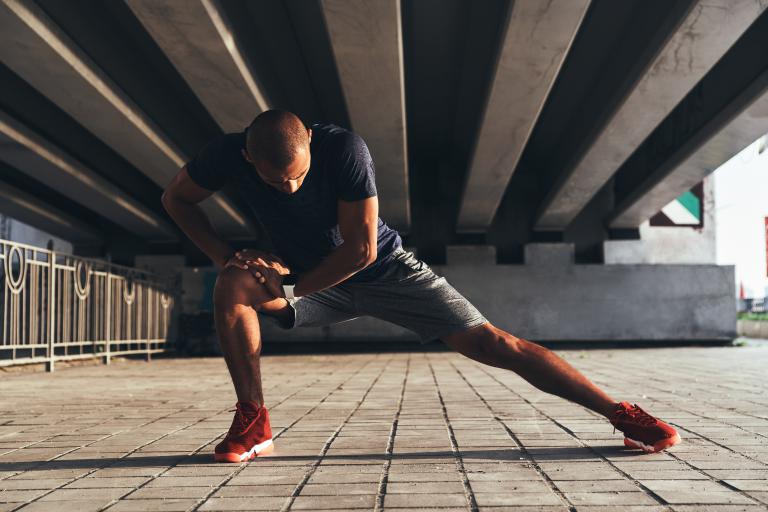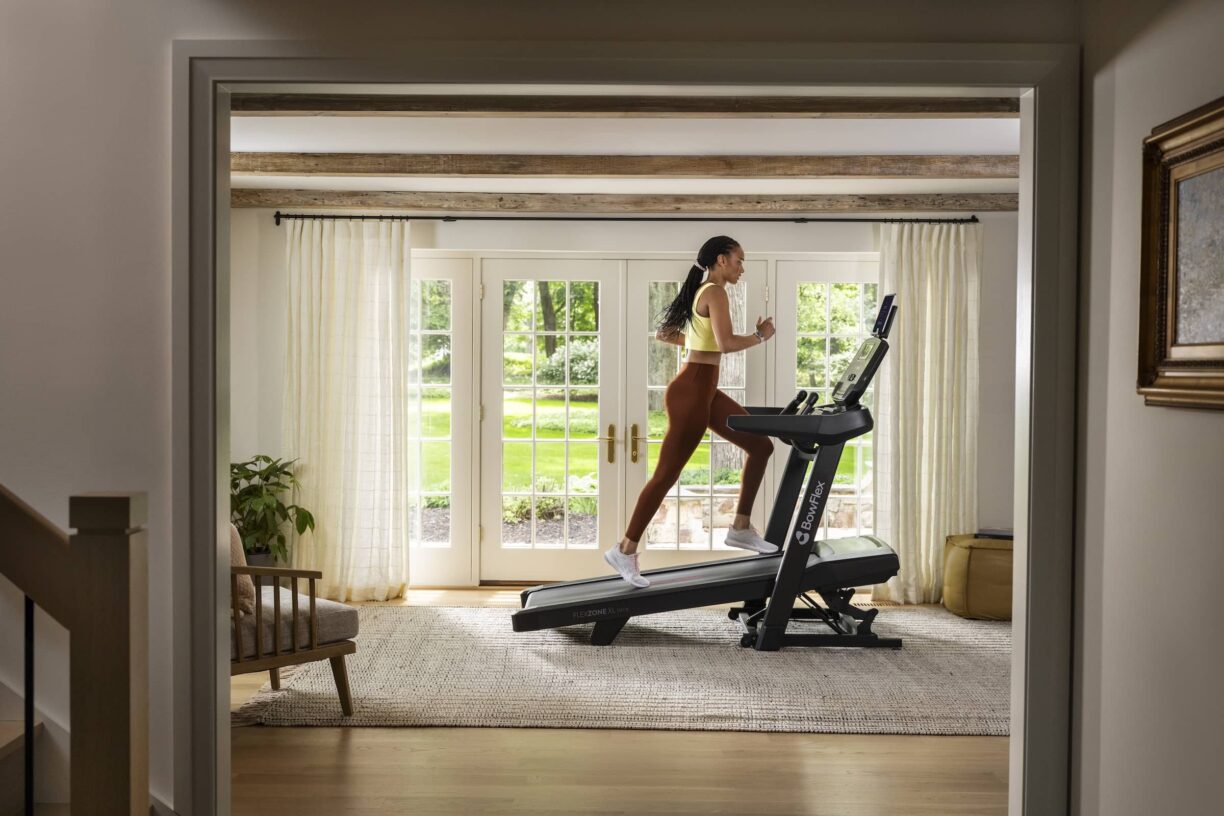We all know the importance of staying active which is vital to our wellness and our immune health. In fact, in a new survey by Deep Heat, Deep Freeze, and Deep Relief – the go-to muscle and joint health products – 90% of people questioned knew that exercise was beneficial for them during this year’s lockdown.
Over half of those people surveyed claimed that exercise boosted their mood, while others said it helped fuel more energy, allowing a busy mind to ‘switch off’. And for others exercise also helped:
- ensure better sleep patterns
- with weight management
- boost body strength.
Added to this, 80% of people were aware that exercising regularly can also help lower the risk of developing certain diseases such as Type 2 Diabetes and heart disease, and over three-quarters of people knew that exercising can even help the NHS by ensuring we stay healthier and subsequently lower our chances of getting ill. However, the bad news is, we need to exercise more to ensure we stay healthy and avoid illness, including Covid-19.
The NHS advises we exercise at a moderate intensity for 150 minutes a week or 75 minutes a week at a vigorous intensity. Advice is also to exercise our arms by lifting and/or using weights. Plus, as research shows that being overweight can increase the risk of contracting Covid-19, the UK government has launched a new obesity strategy to improve the health of the nation. https://www.gov.uk/government/publications/tackling-obesity-government-strategy. And this is also alongside the NHS One You Campaign https://www.nhs.uk/oneyou/ providing enhanced guidance on eating better, drinking less alcohol, exercising more, and looking after the health of our minds and bodies.
Discussing the NHS exercise requirements, Personal Trainer Lucy Gornall explains: “Vigorous-intensity requires a lot of effort. It shouldn’t be easy and should leave you out of breath. Your heart rate will be high and you should struggle to talk throughout.”
But with exercise, often comes aches, pains, niggles, and sprains. Even gentle exercise can cause pain. Research by Deep Heat, Deep Freeze, and Deep Relief has previously revealed how almost three in five people say they experience joint pain or general aches and pains. The latest research poll reveals that 44% of respondents had to deal specifically with exercise-related pains during lockdown 2020, including:
- knee pain
- elbow pain
- pulled muscles
- groin strain.
In a bid to reduce and help relieve these niggling pains, whilst also reducing pressure on the NHS, Deep Heat, Deep Freeze, and Deep Relief has introduced the concept of Self Care-ology, encouraging us to take self-care into our own hands, by dealing with mild aches, pains, and niggles at home.
Another way to reduce the likelihood of injuries is by warming up prior to exercise and cooling down after, even if you’re simply going for a relaxing bike ride. Including these elements into your workout could also reduce the severity of the injury, allowing you to relieve and often get rid of the pain at home, yourself. It’s all about Self-Care-ology…
Sammy Margo is a physio, personal trainer and Deep Heat, Deep Freeze and Deep Relief adviser. Here she shares her simple advice to help take care of yourself before and after exercise.
Before a workout…
Prior to exercise, you want to wake up your body and prime it for the exercise ahead; 41% of people according to the Deep Heat, Deep Freeze, and Deep Relief Poll launch straight into exercise without preparing their body, so it’s time to make a change!
We want to fire up the muscles in our body. Often our muscles may feel stiff or tight, and we want to wake them up and have them feeling looser. We also want to ensure our body is nice and limber before we exercise to further avoid injury. Even if it’s a leisurely walk.
Instead of static still stretches, opt for dynamic stretches, which are active movements. As well as these, you may want to spend a few minutes doing a lighter intensity version of the exercise you’re about to do, such as a slow, gentle jog before going on a more demanding run.
5 SIMPLE PRE-WORKOUT DYNAMIC MOVEMENTS FROM SAMMY MARGO AT DEEP HEAT, DEEP FREEZE & DEEP RELIEF…
- Leg swings
Standing straight, holding a wall for support, swing your left leg back and forth gently. Repeat for 10 swings. Then swap legs. You should find that each swing allows your leg to go a little higher, increasing the range of movement at the joint.
2. Lunge rotation
Standing tall, gaze forward, back straight, take your left leg forward, bending the knee. Drop the right knee to the ground as you do so. Then rotate your torso to the right and turn your head to look over your right shoulder. Hold for 2-3 seconds, then release, and come back up to standing. Aim for 4-5 lunge rotations on each side.
3. Walkouts
To engage your lower and upper body, give these a go. Stand tall and bend at the hips, keeping legs straight. Drop arms down to the floor and walk hands forward, until your body is in a plank position; hands under shoulders and body in a straight horizontal position. Then, slowly walk hands back towards your feet and eventually come up to standing.
4. Arm Circles
Keeping arms straight, raise them forward and rotate them all the way behind, in a big circular movement. Repeat 5 arm circles forward, and 5 arm circles back.
5. Glute bridges
Waking up your glute (bottom) muscles is important as they are often incredibly inactive from long periods sat down. If your glutes aren’t woken up prior to exercise, other muscles in your legs may end up working harder to make up for sleepy bum muscles, and this in turn can lead to injury.
To practice a glute bridge, lie back on the floor, knees bent and feet flat on the ground. Slowly lift hips from the ground, keeping upper back firmly down. Once your hips are lifted, hold the position for 5 seconds, squeezing your glutes, then slowly lower down. Aim to repeat this 10 times.
Other warm up exercise ideas from Deep Heat, Deep Freeze & Deep Relief…
Skipping for 1 minute. No rope? No problem! Simply act out the movements with an ‘invisible’ rope.
Bodyweight Squats. With feet shoulder width apart, bend knees and drop down slowly, keeping your back upright and gaze forward. Keep your heels glued to the floor. Then, pushing through your heels, rise up back to standing. Aim for 10-15 repetitions.
Jumping Jacks. These will wake up your entire body, and raise your heart rate. Jump both feet out simultaneously, whilst lifting your arms up out to either side of your body and touching your hands up above your head. Then drop your arms back down to your side as you jump your feet back together. Aim for 20 jumping Jacks.
After a workout…
Now you’ve completed your workout, you’ll want to get your heart rate back down and bring your body back into a relaxed state. You also want to stretch the muscles and joints you have just used to avoid them going stiff, resulting in potential injury.
Much like when you warmed up, you could enjoy 2-3 minutes of a lower intensity version of the workout you’ve just done. So, if you’ve been running, perhaps a brisk walk. Or if you’ve been cycling, hop off your bike and walk alongside it.
SAMMY MARGO’S 5 POST-WORKOUT STRETCHES
Each stretch to be repeated three times
- Hamstring stretches
Great for the muscles in the back of your thighs. Sit on the ground with your left leg extended out and your right knee bent with the right sole of your foot placed against your inner left thigh. Reach forward as far as you can down your left leg and hold the stretch for 10 seconds. Repeat on the other side.
- Quad stretch
For the front of your thighs, try this stretch to slowly relax muscles. Holding onto a wall or chair for balance, bring your left foot up behind you and hold it with your left hand, against your glutes. Keep your right leg straight. Hold for 10 seconds (your balance will be tested here!), then swap sides.
- Groin stretches
Be sure not to skip this area! Sit on the floor, soles of feet together and knees dropped down either side. Keep your back upright and slowly try to push the knees down further towards the ground. Do this for 20 seconds.
- Cat Cow back stretch
This classic yoga pose can help stretch the lower and upper back muscles. Get on all fours, knees under hips, hands under shoulders. Curl toes under and tilt your pelvis down. This will encourage your tailbone to stick up. As you do so, take your gaze up to the ceiling. Hold for 10. Then, bring that pelvis forward, round your back and bring your gaze down, so you’re staring at your belly button. Hold for 10 again and repeat both Cat and Cow, twice more.
- Arm stretches
Stand tall, bring your straight left arm across the front of your body. Hook your right arm around your left, just below the left elbow, and pull the left arm in towards your body. Hold for 10. Then shake it out and swap sides.
AND WHEN YOU DO GET PAIN…
In true self-care-ology mode, it’s great if you can deal with any aches and pains in the comfort of your own home; I rate Deep Freeze, Deep Heat, and Deep Relief as alternatives to oral painkillers such as paracetamol.
In the latest Deep Heat, Deep Freeze, and Deep Relief survey, a shocking 57% of people revealed that they ignore minor injuries and instead, carry on like normal, however, this could make things worse!
Although 33% of people claim that after a minor injury, they are more careful when exercising, it’s still important to take care and play your part in looking after yourself.





